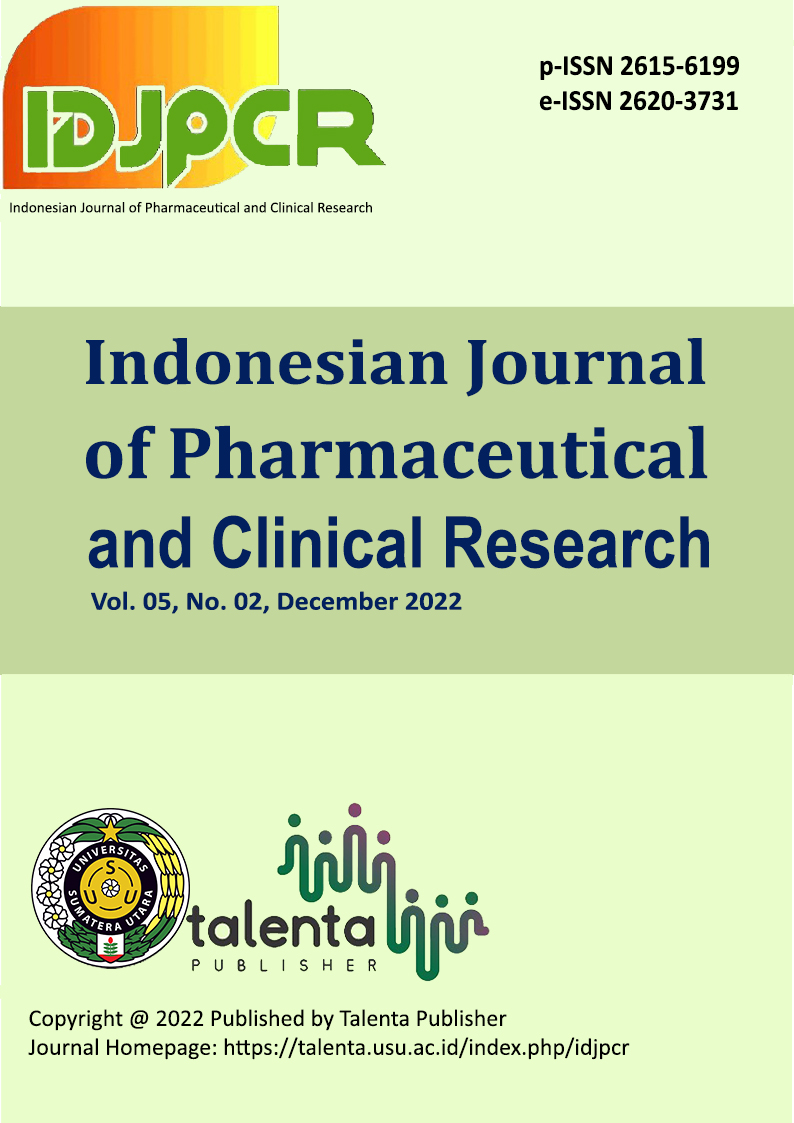Succesfulness of Controlling and Prevention of Leprosy in Aceh Tenggara Regency, Indonesia
DOI:
https://doi.org/10.32734/idjpcr.v5i2.9437Keywords:
Control, prevention, leprosyAbstract
Leprosy remains as a health problem in Indonesia. This retrospective descriptive study analyzed the succesfulness of controlling and prevention of leprosy by Deparment of Health Aceh Tenggara Regency (DHATR), Indonesia period 2010 to 2019. The required data (n=125) were extracted from the DHATR databases using a self-designed questionnaire. The new cases, grade 2 disability  rate, recovery rate with  multi-drug therapy (MDT), isolation measures for leprosy patients, bacille calmette-guerin (BCG) vaccination for the patients’ families, and tertiary prevention were analyzed using a cohort analysis. Succesfulness of the program was analyzed by referring the study results  with the National Guidelines for Eradicating Leprosy (NGEL). Of the 125 patients, 62.4% were male. The new cases found for period: 2010 to 2016, > 5/100,000 population; 2017 to 2019, < 5/100,000 population. The incidence of level 2 disability period 2010 to 2019 was less than 25 cases/10 years and recovery in paucibacillary leprosy (PBL) and multibacillary leprosy (MBL) from 2010 to 2019 reached 100%. The incidence of MBL was higher than that of PBL at the age range of 1 to 70 years.There was no patients isolated and vaccinated during that period. The controlling and prevention  of leprosy in DHATR was in accordance with the NGEL.
Downloads
References
Kemenkes RI, “National Guideline of Leprosy Disease Control Programâ€, Jakarta. Page 1-9. 2012
WHO,â€Weekly Epidemiological Reco rd: Global Leprosy Situation 2012†2012.
A. Mallongi, M. T. Abdullah, A. Mattangang, D. A. T. Pulubuhu, M. Arsyad, A. Muhith, T. Sutarti, and M. Rachmat, “Spatial Pattern and Social Evironmental Risk Factors of Leprosy Occurrence in Barru, Indonesia,†SSRN Electronic Journal, 2019.
WHO, WHO Study Group on Chemotherapy Of Leprosy. Ganeva. Page 1-3. 1992
Muh. Ryman et. Al, “Evaluation of Leprosy Disease Control Program in Work Area of Lompentodea Community Health Center (Puskesmas) West Parigi Sub District Parigi Moutong Regency. Preventive Journal, Volume 7. Page 55-56 2016
Moch Irfan Hadi “Subclinical Stadium Leprosy: Risk Factor and Problem. Publisher of Architecture Study Program of State Islamic University of Sunan Ampel Surabaya. Page 57. 2017
A. Palit and H. Kar, “Prevention of transmission of leprosy: The current scenario,†Indian Journal of Dermatology, Venereology and Leprology, vol. 86, no. 2, p. 115, 2020.
Shen J, Liu M, Zhang J, Su W, Ding G. Relapse in MB leprosy patients treated with 24 months of MDT in SouthWest China: A short report. Leprosy review. 2006 Sep 1;77(3):219-24.
Arif Mulyadi (2017). The Effort of Leprosy Patients in Preventing The Increase of Disability Level. Journal of Nurse and Midwifery, Volume 4, Page 186-188
Downloads
Published
How to Cite
Issue
Section
License
Copyright (c) 2022 Indonesian Journal of Pharmaceutical and Clinical Research

This work is licensed under a Creative Commons Attribution-ShareAlike 4.0 International License.
The Authors submitting a manuscript do so on the understanding that if accepted for publication, copyright of the article shall be assigned to Indonesian Journal of Pharmaceutical and Clinical Research (IDJPCR) and Faculty of Pharmacy as well as TALENTA Publisher Universitas Sumatera Utara as publisher of the journal.
Copyright encompasses exclusive rights to reproduce and deliver the article in all form and media. The reproduction of any part of this journal, its storage in databases and its transmission by any form or media, will be allowed only with a written permission from Indonesian Journal of Pharmaceutical and Clinical Research (IDJPCR).
The Copyright Transfer Form can be downloaded here.
The copyright form should be signed originally and sent to the Editorial Office in the form of original mail or scanned document.









